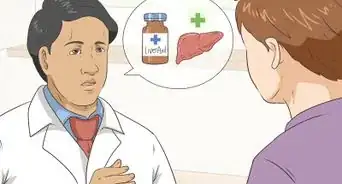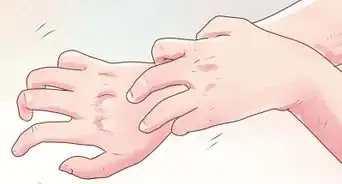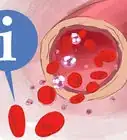This article was medically reviewed by Shari Forschen, NP, MA. Shari Forschen is a Registered Nurse at Sanford Health in North Dakota. Shari has worked in healthcare since 1996 and her expertise lies in acute care bedside nursing on a medical oncology floor. She received her degree from Medcenter one College of Nursing in 2003 and her Family Nurse Practitioner Masters from the University of North Dakota in 2014. Shari is a member of the American Nurses Association.
wikiHow marks an article as reader-approved once it receives enough positive feedback. In this case, 87% of readers who voted found the article helpful, earning it our reader-approved status.
This article has been viewed 1,039,715 times.
Poor circulation and blood flow often cause cool extremities, discolored extremities, and edema (swelling). You may also notice that your feet and hands fall asleep often. To increase blood flow to your entire body and to these extremities, there are several things that you can try.
Steps
Trying Physical Strategies
-
1Participate in regular exercise at least 3 days a week. Get into the habit of finding activities you enjoy doing. Any type of physical activity that gets your blood pumping is ideal. Try activities like walking, jogging, running or aerobics to get you moving. Walking at a mall may be convenient.[1]
-
2Take stretch breaks. Especially if you are working in an office, or sitting in the same position for long periods at a time, taking a stretch break every hour of so can help to increase blood flow. Whether it's touching your toes with your hands, or getting up to take a quick walk and just moving your body, moving your muscles will encourage the blood to flow faster through the tissues, which will in turn help you to feel more energized and alive.Advertisement
-
3Elevate your legs. If you find that you have poor circulation to the extremities (and many people find that their lower legs and feet are most significantly affected), try elevating your legs above the level of your heart. Try putting your legs up on an ottoman or another chair that is higher as the one you are sitting on. You can use a couple of pillows to ensure that your legs are high enough.
-
4Try compression stockings.[2] If you find that your lower legs swell over the course of the day, poor circulatory return may be the cause of your problems. In this case, ask your doctor whether he or she recommends "compression stockings," and ask about where you can get them. They help to return the blood from your extremities back to your heart, which can contribute to improved blood flow.
-
5Go for a massage. Massage can help not only to increase blood flow in the areas being massaged, but also to clear out any toxins that may be lingering from having had insufficient blood flow to that area. You can also ask your massage therapist about essential oils such as rosemary that may help to improve blood circulation.
- If you cannot see a professional massage therapist, try doing it yourself. Massage areas of your body that are tight or tense. Inflammation from these muscles can block the pathways that oxygen uses to travel within the body. This often interferes with blood circulation and blood flow. By massaging these muscles, you will release natural occurring toxins within the body and achieve better blood circulation.
- You can also try using a foam roller as a form of self-massage. Use a foam roller by placing it on the ground and then pressing any sore muscles against it and "rolling." For instance, if a certain part of your leg is tight or sore, such as your IT band or your hamstrings, rest this part of your leg over the foam roller and then roll back and forth to provide a massage to that particular muscle. This can help to stimulate increased blood flow to the area being "massaged" with the foam roller.
Trying Diet Strategies
-
1Improve your diet. Having a healthy diet is key to optimizing your blood flow. This is because, over time, a less healthy diet (containing, for instance, high amounts of processed foods, and one that is high in fat, sugar, and/or salt) can contribute to clogged arteries and overall diminished blood flow. On the other hand, you can improve the health of your arteries and your blood flow by incorporating healthy options like:
- Vegetables
- Lean meats
- Whole grains
- Healthy fats (such as those found naturally in avocado, fish oil, nuts and seeds).
-
2Eat spicy foods. Spicy foods contain capsaicin from hot peppers in them. This chemical increases blood flow throughout the body. This is why many people become flushed when they eat certain spicy foods.
-
3Stay well-hydrated. Most experts recommend 8-12 cups of water per day, and more if and when you are exercising (to compensate for lost fluid during exertion). Consuming enough water is key to keeping your blood volume up, which in turn helps to improve circulation.
- Also avoid too much caffeine and alcohol, as both contribute to dehydration.
- However, if you notice swelling in your lower legs throughout the day, this is one indication not to consume too much fluid.[3] If this is the case for you, speak to your doctor about appropriate fluid recommendations to maintain a healthy level of hydration. Keep in mind that there are many potential causes of swelling, so it is important to get a diagnosis and follow your doctor's recommendations.
Trying Other Lifestyle Changes
-
1Quit smoking.[4] The use of nicotine is a leading cause behind circulation problems. Nicotine constricts your blood vessels and reduces blood flow, which is necessary to help nourish your muscles and organs. Quitting smoking will help to increase the availability of oxygen and other important nutrients to the body. Therefore, if you want to improve your circulation, quitting smoking is an important step to take - not only to improve it right here and now, but to prevent your problems from getting worse down the road.
-
2Have a hot bath. Fill the bathtub with steaming hot water, and check the water before attempting to get in. The water should be hot, but should not be scalding hot. Hot water helps to relax tense muscles, and to increase blood circulation. This is because heat vasodilates your vessels (makes them open up more), which will allow for increased blood flow throughout your body.
- Contrast showers can also increase blood flow. Alternate between hot (100.4 °F (38.0 °C) and cold (64.4 °F (18.0 °C) water each minute for up to 15 minutes to improve your circulation.[5]
-
3Try medication. If you have circulation problems caused by a medical problem such as peripheral artery disease, your doctor can prescribe a variety of medications that help with the overall health of your arteries. There are even specialty drugs such as Cilostazol (Pletal) that function specifically to increase blood flow to the limbs.[6]
-
4Opt for surgery. In severe cases of impaired blood flow to the limbs, surgery may be used as a last resort.[7] Surgery can help to remove clots or other blockages from the blood vessels that may be diminishing circulation to the point of being dangerous or damaging.
References
- ↑ http://www.hopkinsmedicine.org/healthlibrary/conditions/cardiovascular_diseases/chronic_venous_insufficiency_85,P08250/
- ↑ http://www.hopkinsmedicine.org/healthlibrary/conditions/cardiovascular_diseases/chronic_venous_insufficiency_85,P08250/
- ↑ http://www.hopkinsmedicine.org/healthlibrary/conditions/cardiovascular_diseases/chronic_venous_insufficiency_85,P08250/
- ↑ https://www.nlm.nih.gov/medlineplus/ency/article/000170.htm
- ↑ https://www.ncbi.nlm.nih.gov/pubmed/24531433
- ↑ https://www.nlm.nih.gov/medlineplus/ency/article/000170.htm
- ↑ https://www.nlm.nih.gov/medlineplus/ency/article/000170.htm
About This Article
To increase blood flow in your body, take breaks every hour or so to stretch and walk around, which will encourage your blood to flow faster and help you feel more energized. If you have poor circulation in your lower legs and feet, try putting your legs up on an ottoman and a few pillows to get them elevated above your heart. Another great way to get your blood flowing is to massage your body in areas that are tight or tense, since inflammation from tense muscles can interfere with your circulation. Try using a foam roller to “roll” out sore parts of your body, or ask a partner to give you a massage. For more tips from our Medical co-author, like how to improve blood flow with diet and lifestyle changes, keep reading!


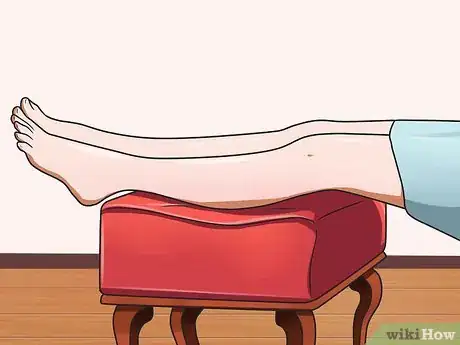

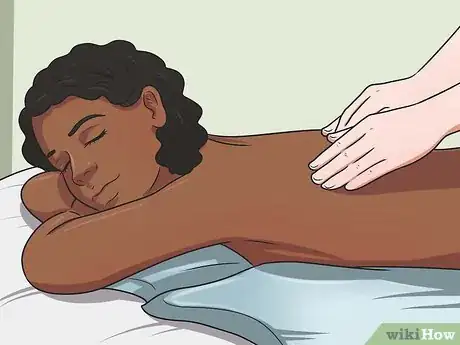
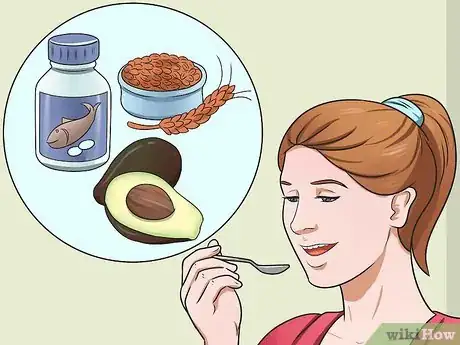
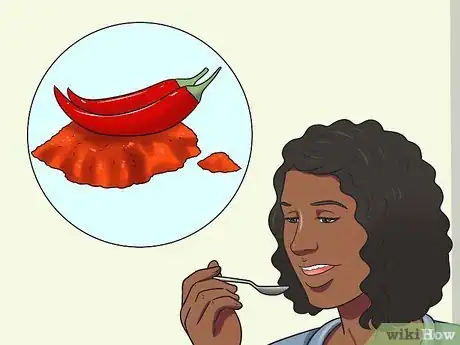



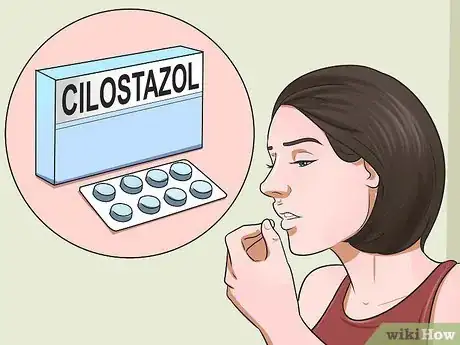
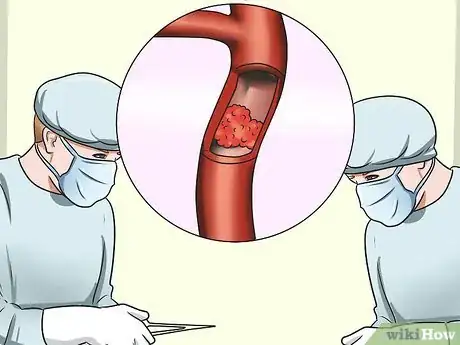


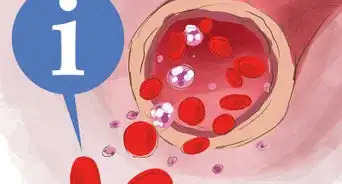
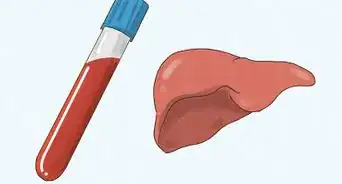

-Step-14-Version-2.webp)


